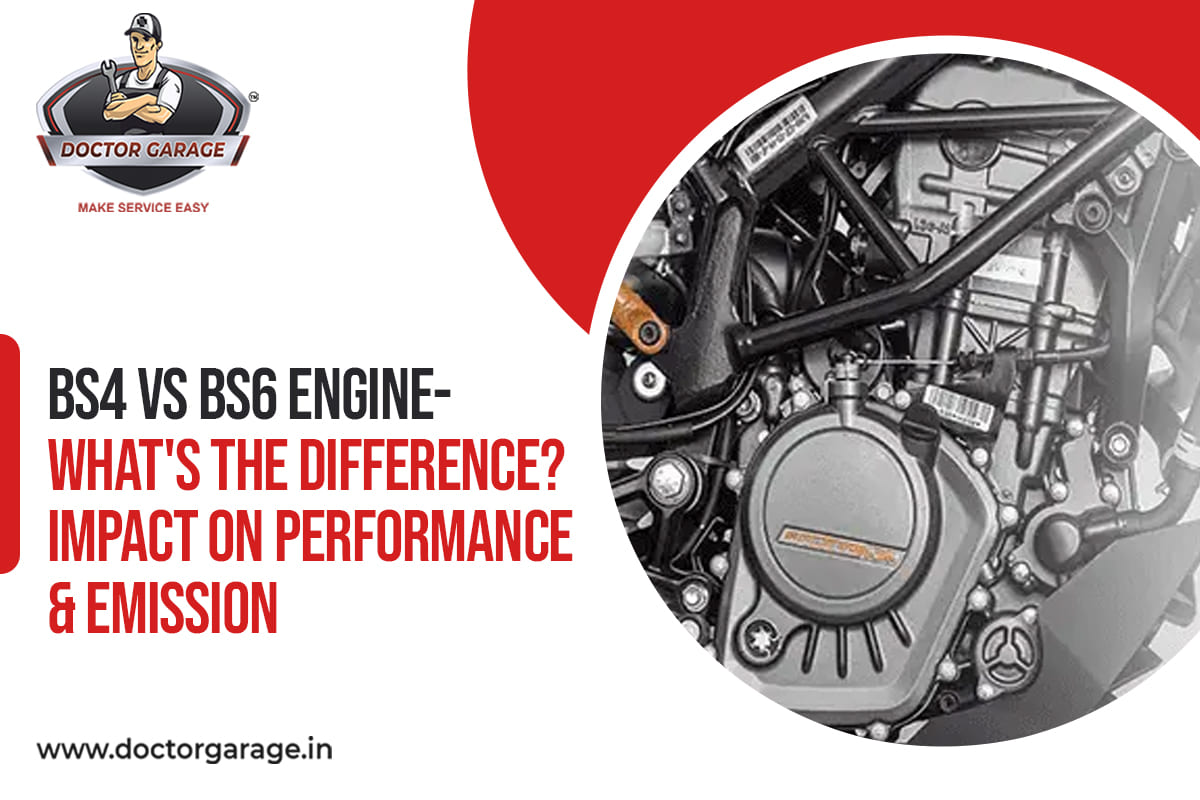BS4 and BS6 are rules set by the central government to regulate and control emissions made by two-wheelers and cars. It sets a limit on the amount of emissions that a car or bike can produce. BS6 is the newly modified version of these regulations, updated in 2020. These changes have significantly affected manufacturers and forced them to upgrade their engine technology to reduce particulate matter emissions and other pollutants from the air. In this blog, we will perform a detailed analysis of the differences between BS4 and BS6 engines, their impact on performance, and emissions.
What is the BS6 Regulation?
The government skipped the BSV norms because of the alarming increase in air pollution, and they abruptly brought in the BS VI rules. There were a large number of changes that were made to existing norms, such as reducing the allowed limits of hydrocarbons, nitrogen oxides, and particulate matter. It is compulsory to follow these regulations and get your engine upgraded. For the highest quality of BS 6 engine service, contact Doctor Garage, the best two-wheeler servicing in India. We have experts and certified professionals who understand the bikes from a wide range of brands and diagnose issues quickly. We provide pickup and drop-off services as well for our customers. We are quick in spotting problems in the bike and make reasonable repairs. Call us to book an appointment.
What is the BS4 Regulation?
Bharat Stage IV Regulations are a stricter version of the BS III norms that existed before them. The BS IV rules focused on reducing the sulfur content, along with other pollutants like nitrogen oxides, hydrocarbons, and particulate matter from fuel. The limit for carbon monoxide was set to 1.0 g/km, whereas it was 0.18 g/km for hydrocarbons and nitrogen oxides, and 0.025 g/km for respirable suspended particulate matter.
Difference Between BS4 and BS6 Regulations
| Aspect | BS4 Norms | BS6 Norms |
|---|---|---|
| Implementation Year | April 2017 | April 2020 |
| Based On | Euro 4 standards | Euro 6 standards |
| Fuel Sulphur Content | 50 ppm sulphur | 10 ppm sulphur (80% reduction) |
| CO (Carbon Monoxide) Emissions (Petrol Cars) | ~1.0 g/km | ~0.5 g/km |
| HC (Hydrocarbon) Emissions (Petrol Cars) | ~0.10 g/km | ~0.05 g/km |
| NOx (Nitrogen Oxide) Emissions (Petrol Cars) | ~0.08 g/km | ~0.06 g/km |
| NOx (Diesel Cars) | ~0.25 g/km | ~0.08 g/km (about 70% lower) |
| Particulate Matter (Diesel Cars) | 0.025 g/km | 0.0045 g/km (approx. 82% lower) |
| Particulate Number (PN) | Not regulated | Regulated (limit on the number of soot particles) |
| On-Board Diagnostics (OBD) | Basic/optional | Mandatory OBD system to monitor emissions in real-time |
| Fuel Compatibility | BS4 vehicles can run only on BS4 fuel | BS6 vehicles must use BS6 fuel (low sulphur) |
| Environmental Impact | Higher pollutants, especially NOx and PM | Much cleaner air, reduced smog and respiratory hazards |
Conclusion
The BS6 regulations are much stricter and help in maintaining cleaner air. Such norms are especially important for countries like India, where the air quality index is too poor. Implementation of these rules has prompted the manufacturers to modify their engine models, which are a bit costlier than the previous models. However, you can get it replaced at Doctor Garage for an affordable price. Being the bike service in India, we have helped many riders transition from BS4 to BS6 engines. Our products are sourced from big and certified brands, which ensure the equipment performs at an industrial-grade level. Call us to book an appointment for your two-wheeled buddy.
Also Read: Bike Maintenance Tips for Monsoon Season



